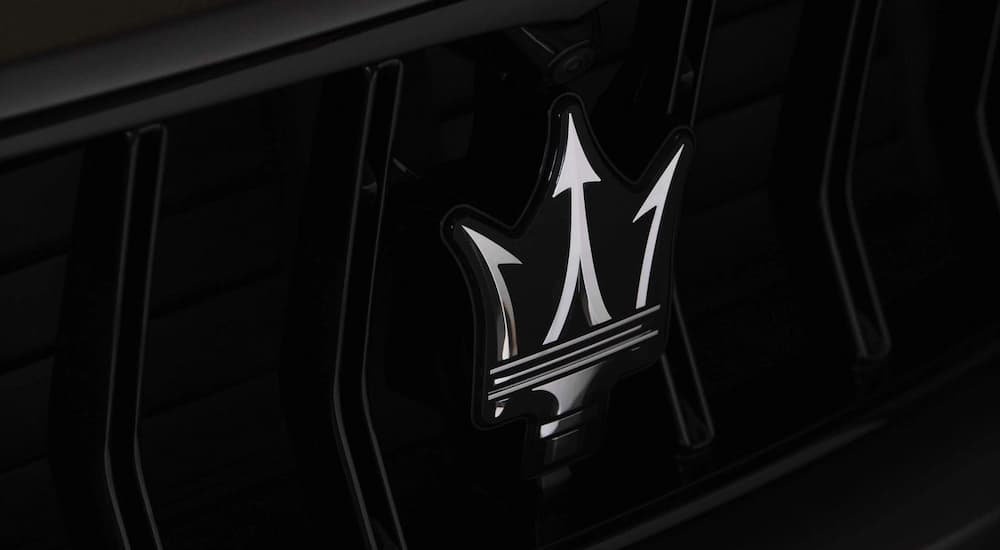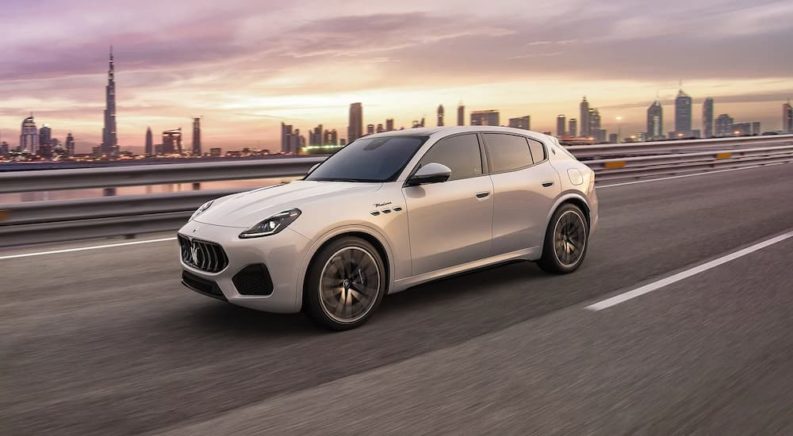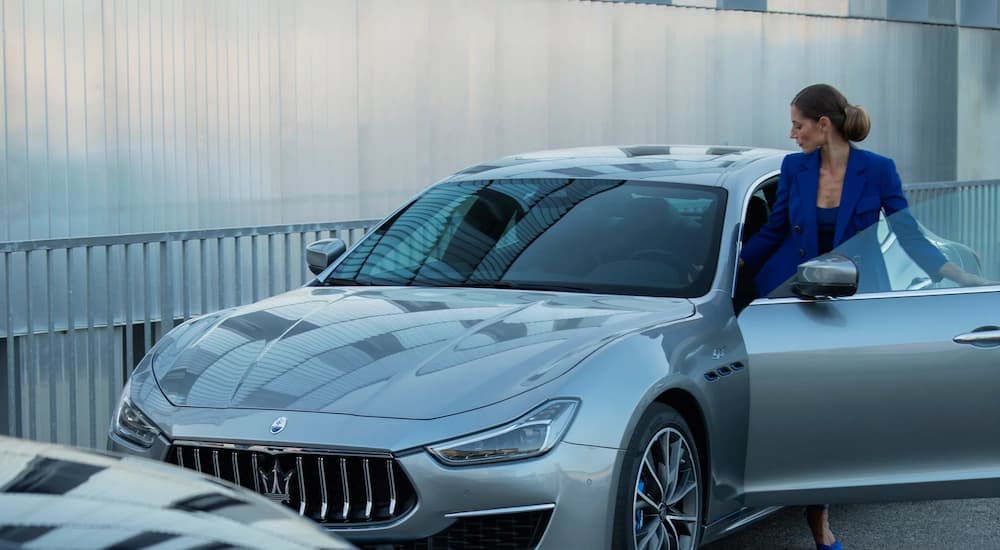From its inception, the automotive industry has been highly competitive. Dozens, if not hundreds, of car makers have closed their doors because they could not secure a large enough piece of the pie. Longevity is no insurance against such a failure, as evidenced by the fate of Oldsmobile and many others in the Great Recession, and few brands have ever been “too big to fail.” For those on the fringes, their survival depends on carefully balancing their delicate niche in the market. When that niche morphs with the tide they must pivot and adapt, or drown in the seas of change. How fitting it is, then, that one of the industry’s greatest survivors is the one bearing Neptune’s trident as their crest.
Maserati is a truly fascinating study. It is one of Italy’s older marques, yet it pales in significance to its brethren today. The brand occupies the space between mass-marketers like FIAT and Alfa Romeo, and the supercar builders Pagani, Lamborghini, and Ferrari. They’ve earned numerous distinctive achievements in racing, criticisms of their modern road cars, and changes of ownership to keep themselves afloat. Against all odds, they may now be stronger than they’ve ever been before. Considering the new Grecale crossover hitting the market, they just might be here to stay.
A Family Affair
Maserati was founded on December 1, 1914 by brothers Alfieri, Ernesto, and Ettore Maserati. The well-regarded engineers designed spark plugs for race cars, and were soon building their own cars for the Diatto carriage-turned-automobile company. The brothers leveraged their unique talents and shared passion for speed to build a reputation among the aristocratic racing class. Diatto stopped building race cars in 1926, so the brothers struck out on their own to build the Tipo 26, the very first vehicle to bear the trident logo created by their brother Mario, inspired by a statue of Neptune in their hometown of Bologna.
Their independent perseverence led to a Class C world speed record that stood from 1929 until 1937, with a 246 km/h run over 10 km (151 mph over 6 miles) in a Tipo V4, quite possibly the world’s first V16-powered car. Their performance as designers and builders of their own race cars cemented the prestige of the Maserati name, creating in only six years the momentum to carry on for decades to come.
Unlike so many well-known automotive pioneering names, such as Enzo Ferrari, Henry Ford, and dare I say Elon Musk, the Maserati name’s renown is truly attributable to the shared passion of a family. Sadly, it wasn’t meant to last. In 1932, an accident led to the death of Alfieri Maserati, ending the golden age of Maserati’s formative years. Though Bindo Maserati stepped in to manage the company after his brother’s passing, and victories at the Nice and Belgian GPs would come in 1933, the company struggled without Alfieri’s unique talents as a businessman. By 1937 the surviving brothers sold the company to Adolfo Orsi, and the next transformation of the brand would begin.

Masters of Audacity
Variants of the adjective “audacious” appear frequently in Maserati’s autobiography. It’s a fitting description of the role they play in their own story. One could never call their automotive decisions “safe” or “timid.” Perhaps no period demonstrated this core value better than the Orsi era, lasting from 1937 through 1968.
In 1939 and 1940, Maserati won the Indy 500 with the 8CT “Boyle Special,” an impressive feat on its own. To this day, they remain the only Italian manufacturer to win the classic high-speed race even once. What’s more, they are the only automaker, period, to win with a wholly-built vehicle.
Even though WWII significantly disrupted operations, the passionate Maseratis continued to develop cars. Racing success would continue with additional Indycar podiums throughout the 1940s, as well as the Pikes Peak hill climb in 1947 and 1948. Under Orsi’s visionary leadership, the company would not be limited to race cars for long, and in proper Maserati fashion their road car debut would be audacious.
The Battista “Pinin” Farina-designed 1947 1500 GranTurismo was one of the first grand tourers in the industry, and was a substantial departure from its Alfa Romeo and Fiat counterparts. The broad-nosed fastback design, featuring triple side vents that are a Maserati signature to this day, won the Grand Prix d’Elegance that year, a fine result for the marque’s first road car 33 years after their founding.
It was a sign of things to come for Maserati. Juan Manuel Fangio won two of his five world championships behind the wheel of a Maserati 250F in 1954 and 1957, but this would mark the end of Maserati’s decades of racing prominence. At the peak of their performance, they withdrew from racing after 1957, after a Ferrari crash during a race killed 12 people in the Guidizollo tragedy.
This radical departure for one of racing’s premier marques coincided with a brilliant pivot: the 3500 GT. The first Maserati to be designed as a road car from the ground up (with a converted I6 racing engine) earned worldwide acclaim as a style icon, and took the company from building a few cars per month to building a few cars per week. Suddenly, Maserati wasn’t just a race car brand, but an exclusive and beautiful touring car brand.
The 3500 GT spawned the Maserati that we know today. Its success enabled the development of two cars whose lineages continue: the iconic Giugiaro-designed 1967 Ghibli, and the legendary Quattroporte luxury sedan. The design philosophy for their road cars was clear. The priorities are racing-quality engines, top-notch handling, and beautiful, luxurious designs. However, the globalization of the world economy created an existential threat for the small-scale builder. After 30 years, in 1968 Adolfo Orsi sold the company to a company who should have been aboe to secure Maserati’s future: Citroen.
Corporatization and the Questionable Definition of Success
Maserati’s history was always fraught. Conceived on the eve of a world war, and without a road car to their name until the end of the next world war, the political and economic landscape they lived in was unimaginably challenging. As a race car builder, profitability depended on racing success, which was far from guaranteed. As a short run grand tourer builder, the need to reconcile their production costs with appropriate sale prices made the margins even worse. The brand had a great reputation, but couldn’t make money. The corporate era which followed 54 years of family-style ownership flipped that script on its head.
For a long time, though, things didn’t look pretty. Citroen’s ownership could hardly be regarded as less than a disaster. Though new models were developed at a surprising pace, they were of questionable significance. The worst offender must be the Quattroporte II, based on the Citroen SM coupe. It demanded a new engine, and the oil crisis of 1973 led to regulations that hampered development and virtually killed the car. Only twelve second-generation Quattroportes were ever built.
The struggles weren’t all Citroen’s fault, and it wasn’t all bad news. Consider the Bora, an outlier in Maserati history for being technologically relevant at the time of its release, as well as fast and beautifuli. The 1975 takeover by Alejandro de Tomaso pulled Maserati even deeper into inexorable corporatism.
De Tomaso’s greatest contributions to Maserati were the concept of platform sharing, and the Biturbo, a remarkable vehicle in automotive history. True to Maserati’s theme of unimaginatively named icons, it carried a twin-turbocharged engine for smooth and efficient power delivery from its V6 engine, the first twi- turbo in a production car.
Designed to target a broader market by lowering the price of entry, the Biturbo sold tens of thousands of units, dwarfing prior Maserati production. Reviewers found it relatively good to drive, with traditionally engaging handling and just enough power to be fun. That unique powertrain was a double-edged sword, however, earning legendary infamy for reliability issues. The styling, while not ugly, was a long way from the flowing lines of the last decade. The cost would be dear.
At face value, this pivot to corporate automotive manufacturing was successful. It was certainly bold to make the world’s first twin-turbo, and they achieved their goal of selling more cars. Maseratis continued to appear in popular culture with product placement in films like the Rocky franchise, despite the hit to their reputation that the Biturbo caused. But ultimately, the stain of those quality issues prevented de Tomaso from making Maserati sustainably profitable. By the time ownership transferred to FIAT in 1993, the lineup was stripped down to almost nothing.
From the Ashes
By 1999, control of Maserati, remaining under the FIAT umbrella, was handed over to none other than Ferrari, who ran it as their own luxury brand. The impact was immediate. The 3200 GT, which had virtually stalled in development, was given a Ferrari engine to get it off the ground. After multiple failed or obscure iterations, the Pininfarina-designed Quattroporte V restored its iconic name with gorgeous styling that earned dozens of awards around the world selling thousands, not dozens, of units. By 2007 the same platform would give birth to the Gran Turismo, a two-door with appropriately dramatic styling and an even more dramatic engine note.
The highlight of the Ferrari era, though, and possibly the pinnacle of Maserati achievements to date, has got to be the MC12. After nearly 50 years, Maserati returned to racing in 2004 with the MC12. For this, Ferrari donated the inner workings of the hallowed Enzo. The MC12 chassis and powertrain are virtually identical, but the exterior is 100% Maserati, with a longer, wider and taller body, a dramatic spoiler, and a sharper nose, leading to greater downforce and a jet fighter-like appearance. The Enzo is one of the most stunning vehicles ever designed, and the MC12 takes a serious crack at being bolder. For good measure, it’s significantly more rare, with only 62 examples being built compared to Enzo’s 399.
The MC12 was a massive success. It claimed the Nurburgring lap record for production cars, besting the Pagani Zonda, Ferrari Enzo, Porsche Carrera GT, and and Koenigsegg CCX in the process. The MC12 claimed five consecutive GT1 team titles, and individual drivers won the GT1 championship four times. It was also ready for endurance challenges, claiming three outright victories in 24 Hours of Spa.
The car undeniably restored Maserati’s image as a racing titan, while the Quattroporte and Gran Turismo restored their image as a beautiful luxury brand, setting them up for the exponential success of the 2011 Kubang concept. The Kubang was lamented by enthusiasts, but it shouldn’t have been. The brand recognized the inevitable fact that people wanted crossover SUVs, and if you’d build it, they would come. The resulting Levante has sold thousands of units every year, in Europe and in the US, ever since its release in 2016.
The Levante, like many other modern Maseratis such as the Ghibli, is often criticized for the dichotomy between its price point and its equipment. Sharing many controls and touch points with old corporate-cousin Dodge products, with high-five and low-six-figure price tags, can earn a car an unfavorable reputation, but every review changes tone entirely when the drive begins.
The Audacity of a Maserati
In any Maserati, the powertrain and chassis combine to deliver an unparalleled driving experience. Though not every Maserati is as quick off the line as competing sports cars, the high-end power is undeniable, and the sound is one of the best in the business. The steering and handling of a Maserati shines as a focal point of design. Every model continues to brandish Neptune’s gleaming trident, with three side vents near the base of the A-pillar. Nothing on the road is quite as brash or brazen as a Maserati. You’ll hear them coming from a mile away, be captivated once you see them, and should you get to ride in one, panel gaps will be forgotten in a rush of classic Italian Gran Tourer performance.
Today, Maserati continues to grow, and even thrive, under new Stellantis ownership, and is profitable for the first time in ages. A compact crossover, the Grecale, is new for 2023. The brand is heralding their electric future with a classic Maserati endeavor: a Formula E racing team, joining the fray that has already honed electric technology for so many performance brands around the world.
The marque has always faced challenges in some way or another, but when faced with adversity, Maserati has made many audacious changes to their business plan and their products throughout their 108 years of operation, adapting in a remarkably successful effort to persist.





